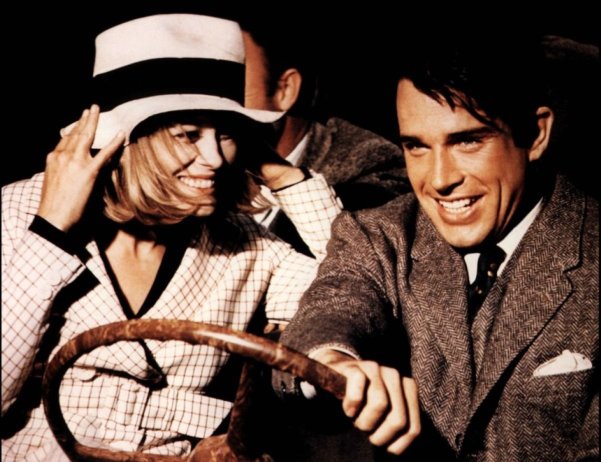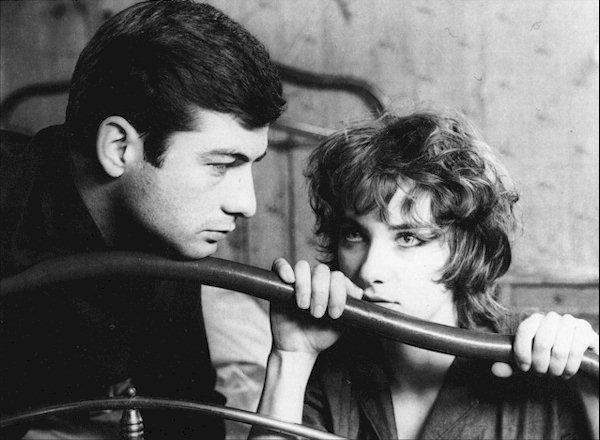Film Society of Lincoln Center, Walter Reade Theater
165 West 65th St. at Amsterdam Ave.
December 3-9, $12 ($9 weekday matinees, three-film pass $27)
212-875-5601
www.filmlinc.com
On the surface, it might seem like the Film Society of Lincoln Center’s dual tribute to Claude Chabrol and Arthur Penn is merely one of coincidence and timing: French auteur Chabrol died on September 12 at the age of eighty, while American director Penn passed away on September 28 at the age of eighty-eight. Both made their first film in 1958, Penn with THE LEFT-HANDED GUN, starring Paul Newman as Billy the Kid, Chabrol winning the Prix Jean Vigo for LE BEAU SERGE. But while Chabrol went on to direct more than fifty films, through 2009’s INSPECTOR BELLAMY, Penn made a mere fourteen, the last being the 1989 cable TV movie INSIDE. In fact, the careers of both men were inextricably linked through the French New Wave, Chabrol being one of its earliest proponents, Penn among the first non-Europeans to adapt its highly stylized, antiestablishment aesthetic. Lincoln Center will be screening eight works by Chabrol and seven by Penn December 3-9, including the former’s STORY OF WOMEN, LA FEMME INFIDÈLE, and LES BONNES FEMMES and the latter’s LITTLE BIG MAN, NIGHT MOVES, and THE MIRACLE WORKER.

Faye Dunaway and Clyde Barrow go on a violent bank-robbing rampage in American classic BONNIE AND CLYDE
BONNIE AND CLYDE (Arthur Penn, 1967)
Friday, December 3, 6:30, & Thursday, December 7, 3:10
 Arthur Penn changed the course of Hollywood — and world cinema — in 1967 with BONNIE AND CLYDE, a film previously offered to such Nouvelle Vague luminaries as François Truffaut and Jean-Luc Godard. Cowritten by David Newman (SUPERMAN I-III) and Robert Benton (KRAMER VS. KRAMER), the film mythologizes the true story of depression-era bank robbers Clyde Barrow and Bonnie Parker, played magnificently by Warren Beatty and Faye Dunaway. At its heart, BONNIE AND CLYDE is a passionate yet unusual love story, filled with close-ups of the gorgeous Dunaway, who is first seen naked, running to her bedroom window confident and carefree, more a modern 1960s woman than a poor 1930s small-town waitress. Meanwhile, Barrow might know how to shoot a gun, but he’s a dud in bed; “I ain’t much of a lover boy,” he tells Bonnie early on, so their passion plays out in fast-moving car chases and shootouts rather than under the covers (while also playing off of Beatty’s already well-deserved reputation as a ladies’ man). They pick up an accomplice in gas-station attendant C. W. Moss (Michael J. Pollard) and are soon joined by Clyde’s brother, Buck (Gene Hackman), and his wife, Blanche (Estelle Parsons), and continue their rampage as heroic, happy-go-lucky hold-up artists, leading up to one of the most influential and controversial endings ever put on celluloid, an unforgettable finale of violent and poetic beauty. Penn, editor Dede Allen, and cinematographer Burnett Guffey redefined the gangster picture with their creative use of slow motion, long takes, and crowded shots, defying Hollywood conventions in favor of unique and innovative storytelling devices, allowing the film to work on multiple levels. Coscreenwriter Benton will participate in a Q&A following the December 3 screening.
Arthur Penn changed the course of Hollywood — and world cinema — in 1967 with BONNIE AND CLYDE, a film previously offered to such Nouvelle Vague luminaries as François Truffaut and Jean-Luc Godard. Cowritten by David Newman (SUPERMAN I-III) and Robert Benton (KRAMER VS. KRAMER), the film mythologizes the true story of depression-era bank robbers Clyde Barrow and Bonnie Parker, played magnificently by Warren Beatty and Faye Dunaway. At its heart, BONNIE AND CLYDE is a passionate yet unusual love story, filled with close-ups of the gorgeous Dunaway, who is first seen naked, running to her bedroom window confident and carefree, more a modern 1960s woman than a poor 1930s small-town waitress. Meanwhile, Barrow might know how to shoot a gun, but he’s a dud in bed; “I ain’t much of a lover boy,” he tells Bonnie early on, so their passion plays out in fast-moving car chases and shootouts rather than under the covers (while also playing off of Beatty’s already well-deserved reputation as a ladies’ man). They pick up an accomplice in gas-station attendant C. W. Moss (Michael J. Pollard) and are soon joined by Clyde’s brother, Buck (Gene Hackman), and his wife, Blanche (Estelle Parsons), and continue their rampage as heroic, happy-go-lucky hold-up artists, leading up to one of the most influential and controversial endings ever put on celluloid, an unforgettable finale of violent and poetic beauty. Penn, editor Dede Allen, and cinematographer Burnett Guffey redefined the gangster picture with their creative use of slow motion, long takes, and crowded shots, defying Hollywood conventions in favor of unique and innovative storytelling devices, allowing the film to work on multiple levels. Coscreenwriter Benton will participate in a Q&A following the December 3 screening.
